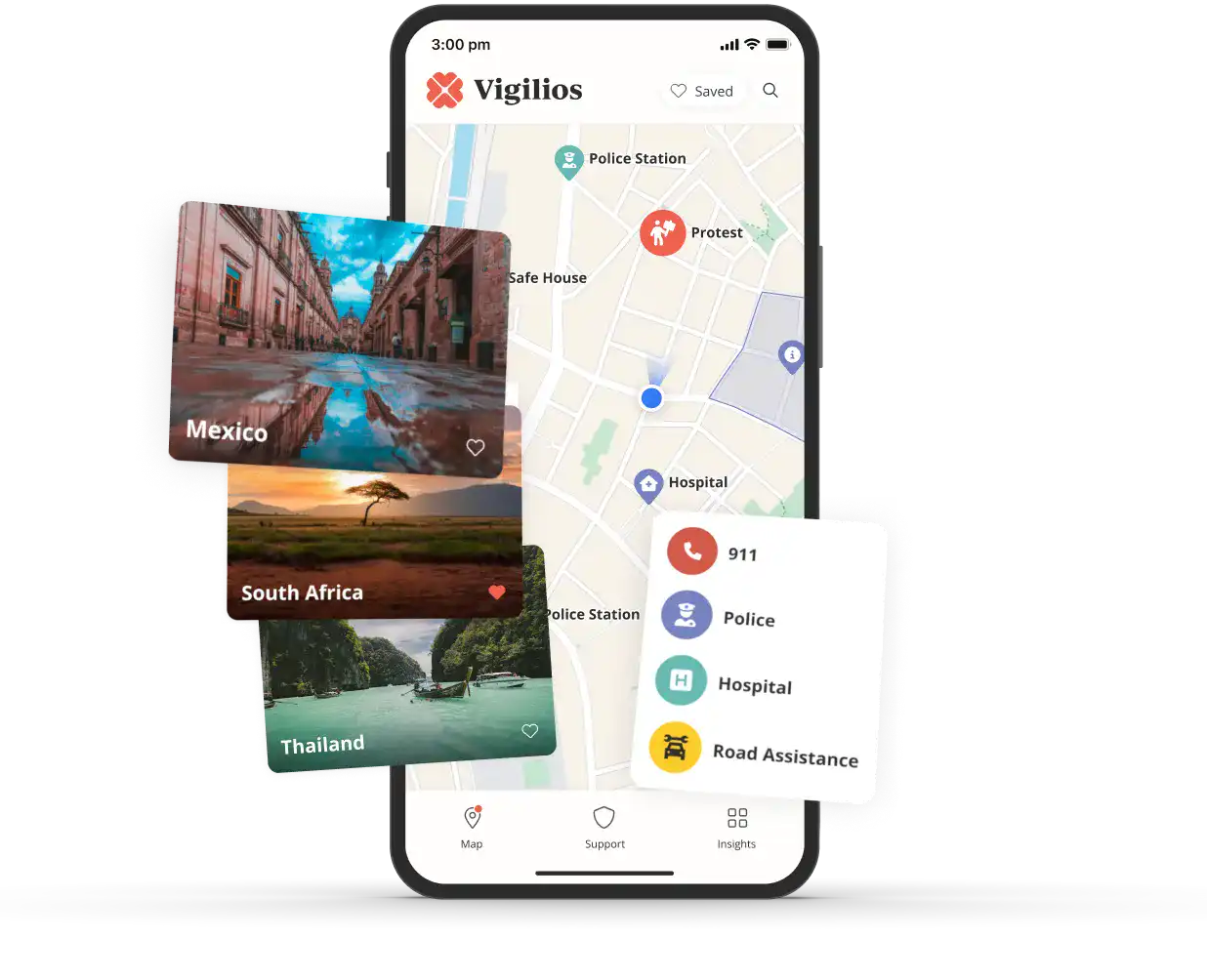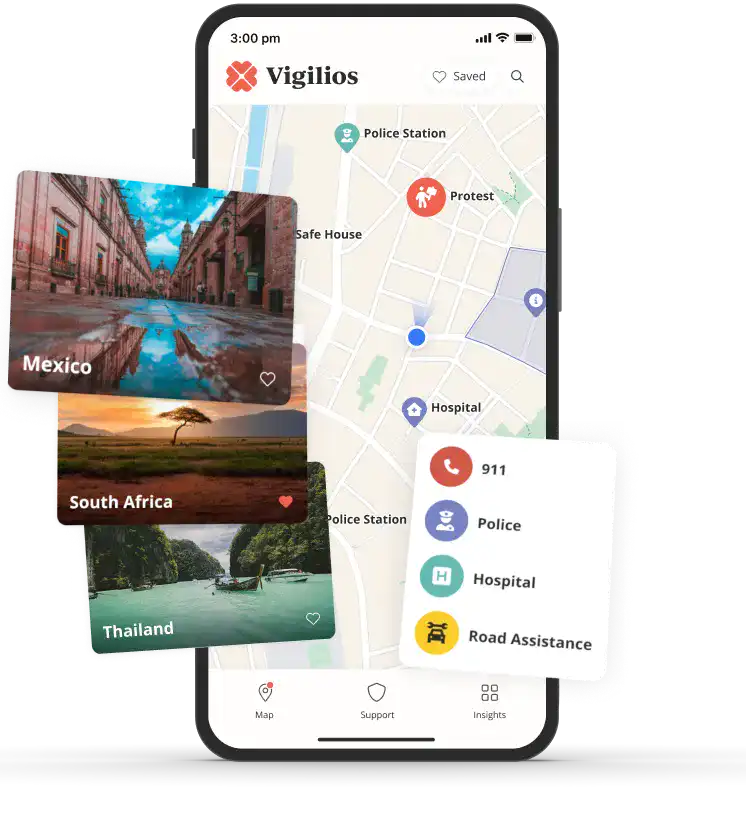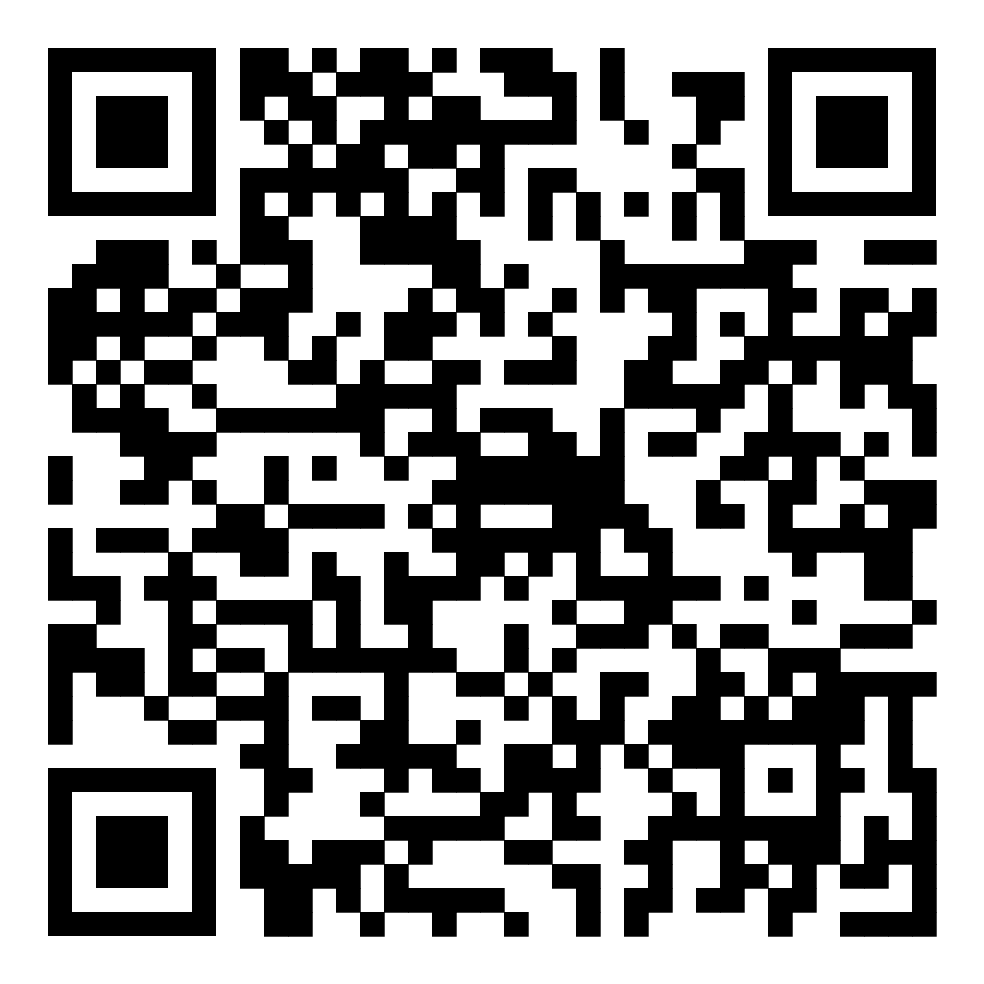


Is Northern Mariana Islands Safe?
The Northern Mariana Islands are generally safe for travelers, with a low crime rate. However, petty theft and disputes can occur, so exercise caution with valuables. Tropical cyclones pose a risk during certain seasons, necessitating preparedness. Medical facilities are limited, so travelers should ensure adequate travel insurance coverage. Respecting local customs and being culturally sensitive is advised for a smooth experience.
Safety & Security
Northern Mariana Islands is generally considered a safe travel destination, with a low crime rate compared to other tourist hotspots. However, it's still important to exercise caution and take necessary precautions.
-
Petty Crime: While violent crime is relatively rare, petty crimes such as theft and pickpocketing can occur, especially in crowded areas or tourist hotspots. Remain vigilant and keep valuables secure.
-
Scams: Be wary of common scams targeting tourists, such as overcharging for goods or services, or being offered unsolicited tours or activities. Only deal with reputable vendors and tour operators.
-
Civil Unrest: The islands have a stable political climate, but it's advisable to monitor local news and avoid any areas with civil unrest or protests.
-
Natural Disasters: The islands are located in a seismically active region and can be affected by typhoons and earthquakes. Familiarize yourself with emergency procedures and follow local advisories.
-
Road Safety: Exercise caution when driving or walking near roads, as traffic rules may differ from your home country. Avoid driving at night if possible, and be mindful of pedestrians and wildlife on the roads.
While the overall risk is low, it's always wise to remain vigilant, follow local laws and customs, and take common-sense precautions to ensure a safe and enjoyable trip.
Health & Medical
The Northern Mariana Islands offer decent healthcare facilities, though travelers should take some precautions. Vaccinations for hepatitis A, typhoid, and influenza are recommended. Mosquito-borne illnesses like dengue fever are a risk, so using insect repellent is advisable. The islands have a few hospitals, but medical facilities may be limited compared to larger destinations.
- Vaccinations: Hepatitis A, typhoid, and seasonal influenza vaccinations are recommended for most travelers.
- Mosquito-Borne Illnesses: Dengue fever and other mosquito-borne diseases are present. Use insect repellent and cover exposed skin.
- Medical Facilities: The islands have a few hospitals, but medical care may be limited compared to larger destinations. Travel health insurance is advisable.
- Water and Food Safety: Drink bottled water and avoid undercooked meat, unpeeled fruits, and unpasteurized dairy products to prevent foodborne illnesses.
- Air Pollution: Air quality is generally good, but hazy conditions can occur due to volcanic emissions or wildfires.
Natural Disasters
The Northern Mariana Islands, located in the western Pacific Ocean, are prone to natural disasters due to their geographic location and tropical climate. Typhoons are a significant concern, with the region experiencing several powerful storms annually during the typhoon season from July to December. These storms can bring destructive winds, heavy rainfall, and storm surges, posing risks to infrastructure and safety.
-
Earthquakes and tsunamis are also potential threats, as the islands lie along the seismically active Pacific Ring of Fire. While not as frequent, these events can cause significant damage and disruptions.
-
Volcanic activity is another risk factor, with several active volcanoes present in the region. Eruptions, although infrequent, can release ash and gases, potentially disrupting air travel and posing health hazards.
-
Flooding and landslides are common occurrences during heavy rainfall periods, particularly in low-lying areas and on steep terrain. These events can lead to property damage and transportation disruptions.
Travelers are advised to monitor weather forecasts, follow local advisories, and familiarize themselves with evacuation procedures and emergency shelters. Purchasing comprehensive travel insurance and being prepared for potential disruptions is highly recommended.
Transportation
Transportation in the Northern Mariana Islands is generally safe and reliable for travelers. The main modes of transportation include:
-
Taxis and Rental Cars: Taxis are readily available on the islands, especially around hotels and tourist areas. Rental cars are also a popular option for getting around, with major rental companies operating on the islands. Roads are well-maintained, but driving can be challenging due to narrow roads and heavy traffic during peak hours.
-
Public Transportation: The islands have a limited public transportation system, consisting of shuttle buses and vans that operate on fixed routes. These are a budget-friendly option for getting around, but schedules and routes may be limited.
-
Ferries: Inter-island ferries connect the main islands of Saipan, Tinian, and Rota. These are a convenient way to travel between the islands, but schedules can be affected by weather conditions.
-
Air Travel: For travel between the islands or to other destinations, air travel is a common option. The islands have several small airports, with regular flights to and from Guam and other regional hubs.
While transportation is generally safe, it's advisable to exercise caution when driving, especially at night or in remote areas. Rental cars should be secured properly, and valuables should not be left in plain sight. Additionally, pedestrians should be cautious when crossing roads, as drivers may not always yield the right of way.
Cultural Norms
The Northern Mariana Islands, a U.S. territory in the Pacific Ocean, boasts a rich cultural tapestry influenced by indigenous Chamorro, Spanish, and American traditions. As a visitor, it's essential to respect local customs and practices to ensure a harmonious experience.
-
Dress Code: While casual attire is generally acceptable, revealing clothing should be avoided, especially when visiting churches or cultural sites. Covering shoulders and knees is recommended.
-
Greetings: Greet elders and those in positions of authority with respect. A slight bow or a handshake is appropriate. Avoid public displays of affection.
-
Chamorro Traditions: Attend cultural events like fiestas, where you can witness traditional dances, music, and cuisine. Respect local customs and seek permission before participating or taking photographs.
-
Religious Observances: The majority of the population is Catholic or Christian. Be mindful of religious holidays and ceremonies, and avoid disruptive behavior near churches or during processions.
-
Environmental Awareness: The islands take pride in their natural beauty. Respect designated protected areas, refrain from littering, and follow guidelines for responsible tourism.
By embracing the local culture with an open mind and respectful demeanor, travelers can enrich their experience and create lasting connections with the warm and welcoming people of the Northern Mariana Islands.
Emergency Services
Emergency services in the Northern Mariana Islands are generally reliable, but may have limited resources compared to larger destinations. The islands have a centralized 911 emergency response system for police, fire, and medical emergencies. However, response times can vary depending on the location and availability of personnel.
-
Medical Facilities: The Commonwealth Healthcare Corporation operates the only public hospital on Saipan, with limited facilities on Tinian and Rota. Private clinics are also available, but major medical cases may require evacuation to Guam or Hawaii.
-
Tourist Assistance: The Marianas Visitors Authority provides a 24/7 tourist hotline for assistance with emergencies, lost items, and general inquiries. However, language barriers may exist for non-English speakers.
-
Natural Disasters: The islands have emergency shelters and evacuation plans in place for typhoons and other natural disasters. Visitors should follow instructions from local authorities and monitor weather advisories.
-
U.S. Affiliation: As a U.S. territory, the Northern Mariana Islands can request additional resources and support from federal agencies in case of major emergencies or disasters.
It's advisable for travelers to purchase comprehensive travel insurance, familiarize themselves with emergency contacts, and follow local guidance during their stay.
Frequently Asked Questions

Is Northern Mariana Islands safe for tourists?
Northern Mariana Islands is generally safe for tourists. However, visitors should exercise caution, especially at night, and avoid isolated areas. Petty crimes like theft can occur. It's advisable to keep valuables secured and be aware of your surroundings.
Is Northern Mariana Islands safe for solo female travelers?
Solo female travelers can generally feel safe in Northern Mariana Islands, but should take standard precautions. Avoid walking alone at night, stay in well-lit areas, and be cautious of unwanted attention. Dress modestly to respect local customs.
Is Northern Mariana Islands safe for families?
Northern Mariana Islands is a family-friendly destination. Families can enjoy various outdoor activities, beaches, and cultural attractions. However, be mindful of the tropical climate, use sun protection, and ensure children stay hydrated.
Is Northern Mariana Islands LGBTQ+ friendly?
LGBTQ+ rights are limited in Northern Mariana Islands. Same-sex sexual activity is legal, but same-sex marriage is not recognized. LGBTQ+ travelers should exercise caution and avoid public displays of affection to avoid potential confrontations.
Do you need a visa to go to Northern Mariana Islands?
No visa is required for tourists from the United States, Canada, and most European Union countries to visit Northern Mariana Islands for up to 45 days with a valid passport. However, visitors should check entry requirements based on their nationality.
Can you drink tap water in Northern Mariana Islands?
Tap water is generally safe to drink in Northern Mariana Islands. However, some visitors may prefer bottled water as a precaution, especially in rural areas or during periods of heavy rainfall when water quality can be affected.
What is the currency in Northern Mariana Islands?
The US dollar (USD) is the official currency in Northern Mariana Islands. Credit cards are widely accepted in major establishments, but it's advisable to carry cash for smaller purchases or in remote areas.
Northern Mariana Islands Travel Advisory
The following government travel advisories provide additional helpful resources for your destination to stay safe and informed.




